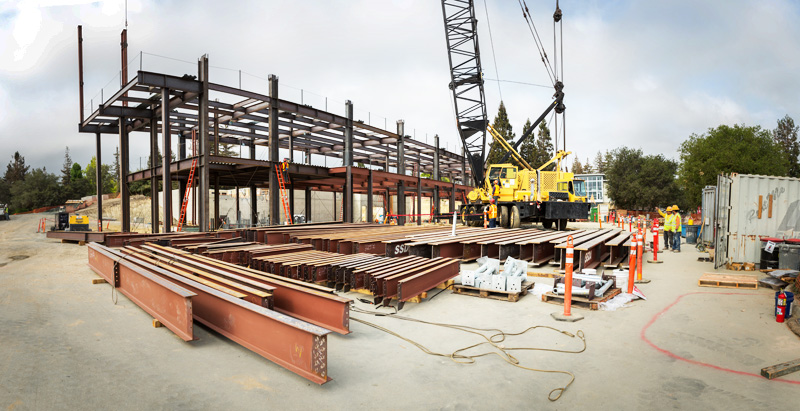Two organizations focused on leadership in the built environment are now working in unison to explore ways public-private partnerships (P3) can be used to achieve high-performance buildings. The National Institute of Building Sciences (NIBS) and the Royal Institution of Chartered Surveyors (RICS) are bringing together international experts on the utilization of P3 to address current government challenges and advance the achievement of a high-performance building stock.
Building owners and policy makers are becoming increasingly interested in the performance of buildings. Whether driven by sustainability, resilience concerns or the desire to protect the investments of taxpayer dollars, government agencies are under increasing pressure to achieve performance-based requirements. These pressures are coming at a time when budgets for new facilities, major capital improvements and long-term maintenance are contracting. Utilizing P3s may help governments overcome challenges related to project financing while driving achievement of performance requirements.
Despite their potential benefits, P3s have not been widely used for building projects in the United States. However, many governments, including Canada, Australia and members of the European Union, have found success in utilizing the approach for facilities such as schools, hospitals and prisons.
“Public-private partnerships can be a great tool for government agencies to improve energy efficiency, resilience and other high-performance building attributes, while reducing the cost of implementation,” said NIBS President Henry L. Green, Hon. AIA. "With the Institute's focus on achieving high-performance buildings and expertise in whole building design, and RICS's expertise in project finance and access to international best practices, we hope to lead the way towards greater use of P3s."
Despite their potential benefits, P3s have not been widely used for building projects in the United States. However, many governments, including Canada, Australia and members of the European Union, have found success in utilizing the approach for facilities such as schools, hospitals and prisons. And some P3 experts and organizations in the field think it’s about time to expand application of the concept to buildings in the U.S.
“The idea of applying the P3 concept more to buildings, and especially building performance, is a potentially promising new avenue in the U.S. for this powerful and creative partnership model,” said Americas Managing Director for RICS Neil Shah. “We are enthusiastic about collaborating on this initiative with NIBS, and combining our extensive resources to see how private industry can help public agencies to maximize energy efficiency and save taxpayer dollars. And we look forward to having more to say on this important subject at next year’s RICS Summit of the Americas.”
Shifting to a greater focus on building performance across the facility life-cycle is a more cost-effective and efficient way to achieve high-performance buildings. At the beginning of the P3 process, the government agency occupying the building identifies the required performance and terms of the project. With the performance requirements defined early, the private partner can then work across the design, construction and operations phases of the project to identify the most cost-effective strategy to assure such requirements are met.
International authority on housing, real estate and infrastructure Sandy Apgar, FRICS, CRE, FIoD, FRSA explained, “P3s enable public authorities and private firms to solve complex building problems that neither could accomplish by working alone. The larger and more complex the project, the more likely it is that a P3 vehicle can leverage government and business resources, and save time and cost over conventional single sector structures.”
Such an approach also encourages the use of emerging best practices (including integrative design processes), adequate training of operations personnel and the sharing of building information.
“Government laboratories have unique research equipment and skills that few businesses can match. And military housing P3s have pioneered award-winning, energy-efficient, environmentally responsible buildings and neighborhoods, through novel site layouts, ‘green’ construction materials, and numerous other technical and operational innovations,” Apgar continued. “On the other hand, businesses have organizational know-how, management systems, and pro-active cultures that are challenging for public agencies to adopt, and could help government agencies integrate and make the most of these private-sector innovations.”
NIBS and RICS are set to begin work on the P3 project this summer and are looking for input from industry experts. The two organizations plan to issue a report on the topic in April 2016 at the RICS Summit of the Americas in Washington, D.C.
Experts interested in participating in this effort can contact Ryan Colker at NIBS [rcolker@nibs.org] or Thomas Pienaar at RICS [tpienaar@rics.org] to learn how get involved.
Related Stories
Codes and Standards | Jul 22, 2024
Tennessee developers can now hire their own building safety inspectors
A new law in Tennessee allows developers to hire their own building inspectors to check for environmental, safety, and construction violations. The law is intended to streamline the building process, particularly in rapidly growing communities.
Codes and Standards | Jul 22, 2024
New FEMA rules include climate change impacts
FEMA’s new rules governing rebuilding after disasters will take into account the impacts of climate change on future flood risk. For decades, the agency has followed a 100-year floodplain standard—an area that has a 1% chance of flooding in a given year.
Sustainability | Jul 18, 2024
Grimshaw launches free online tool to help accelerate decarbonization of buildings
Minoro, an online platform to help accelerate the decarbonization of buildings, was recently launched by architecture firm Grimshaw, in collaboration with more than 20 supporting organizations including World Business Council for Sustainable Development (WBCSD), RIBA, Architecture 2030, the World Green Building Council (WorldGBC) and several national Green Building Councils from across the globe.
MFPRO+ News | Jul 15, 2024
More permits for ADUs than single-family homes issued in San Diego
Popularity of granny flats growing in California
Codes and Standards | Jul 15, 2024
New York City code update changes definition of a major building
Changes affecting how construction projects in New York City are permitted will have significant impacts for contractors. On Dec. 11, the definition of a major building in the city’s code will change from 10 stories to seven, or 75 feet. The change will affect thousands more projects.
Government Buildings | Jul 8, 2024
GSA adopts new accessibility guidelines for federal properties
The U.S. General Services Administration (GSA) adopted a new rule with new accessibility guidelines for federal buildings. The rule establishes that pedestrian facilities in the public right-of-way are readily accessible to and usable by people with disabilities.
Office Buildings | Jul 8, 2024
Office vacancy peak of 22% to 28% forecasted for 2026
The work from home trend will continue to put pressure on the office real estate market, with peak vacancy of between 22% and 28% in 2026, according to a forecast by Moody’s.
Green | Jul 8, 2024
Global green building alliance releases guide for $35 trillion investment to achieve net zero, meet global energy transition goals
The international alliance of UK-based Building Research Establishment (BRE), the Green Building Council of Australia (GBCA), the Singapore Green Building Council (SGBC), the U.S. Green Building Council (USGBC), and the Alliance HQE-GBC France developed the guide, Financing Transformation: A Guide to Green Building for Green Bonds and Green Loans, to strengthen global cooperation between the finance and real estate sectors.
Codes and Standards | Jul 8, 2024
New York State building code update would ban fossil fuels in new buildings
New York’s Building Code Council is set to include the All-Electric Buildings Act in its 2025 code update. The Act would ban natural gas and other fossil fuels in new buildings.
Contractors | Jul 1, 2024
New emergency cooling vest can prevent heat-related deaths on construction sites
A new emergency cooling vest is designed to prevent heat-related deaths without requiring electricity or refrigeration. The lightweight ColdVest is the world’s first portable, Class 1 FDA emergency cooling device that can rapidly lower core body temperatures up to 5 degrees in under 3 minutes.

















